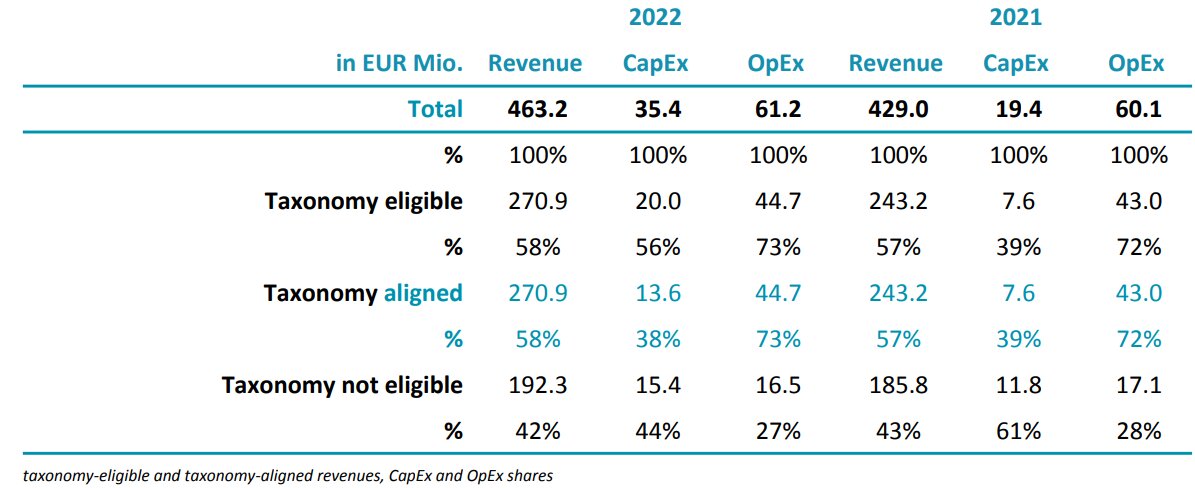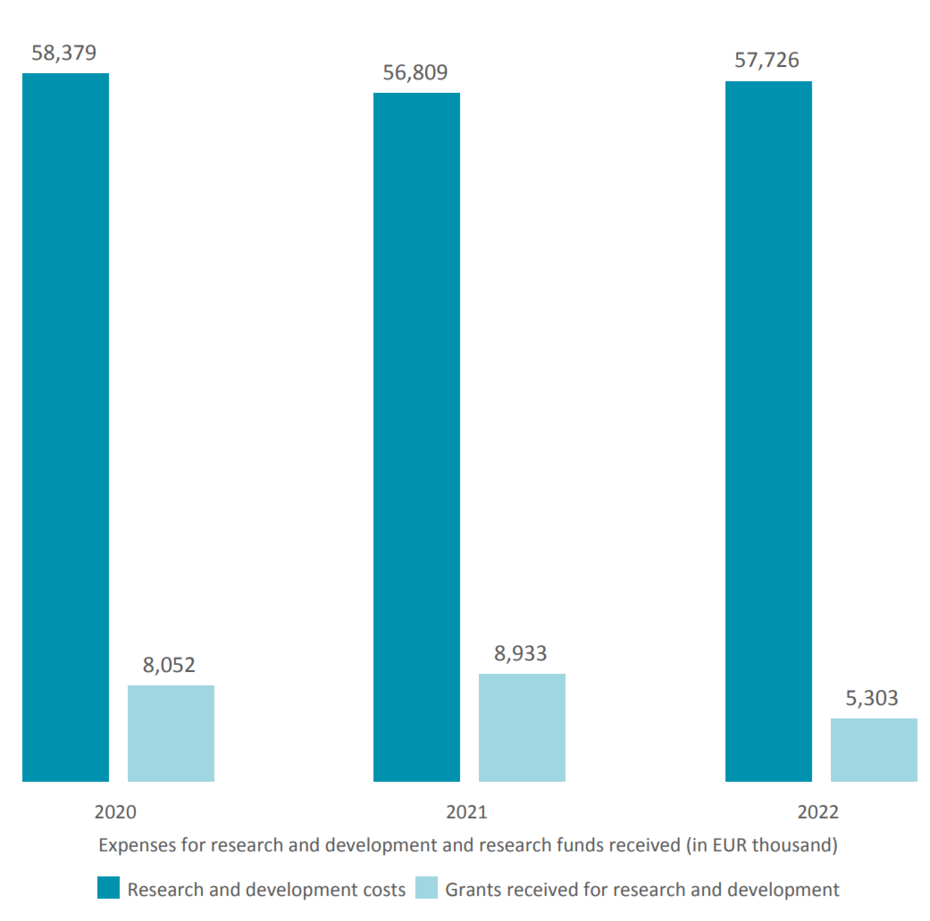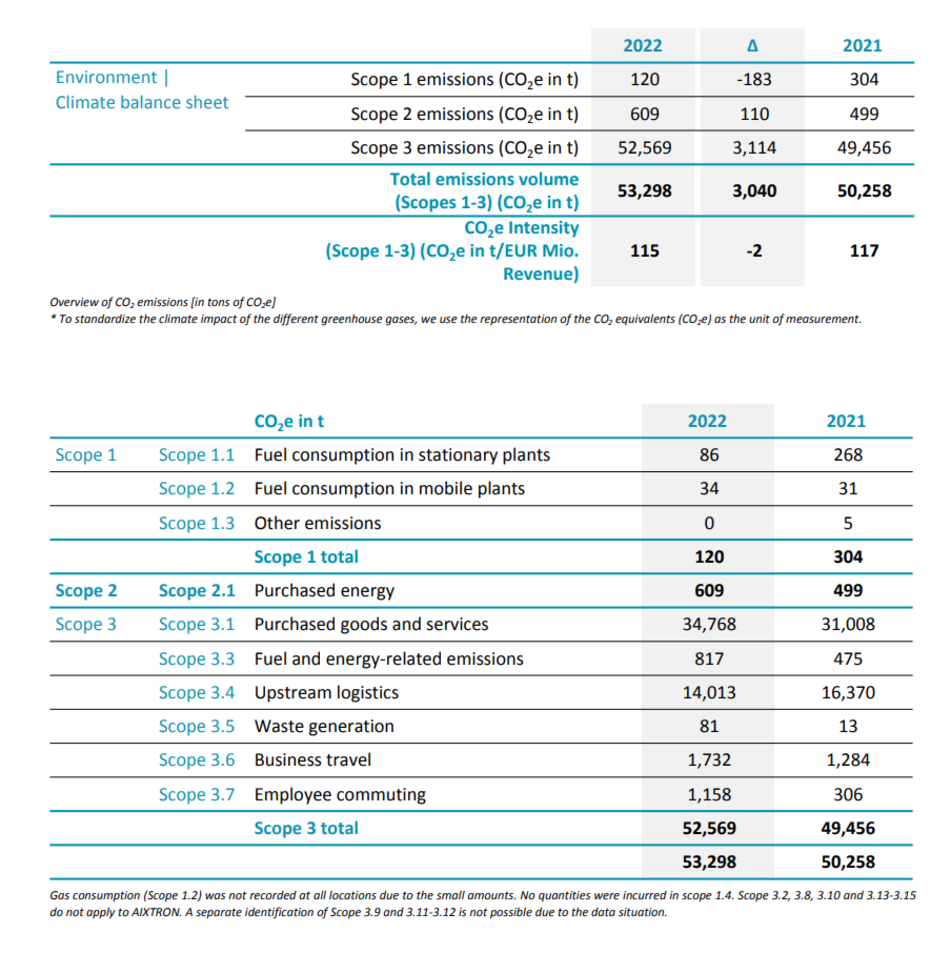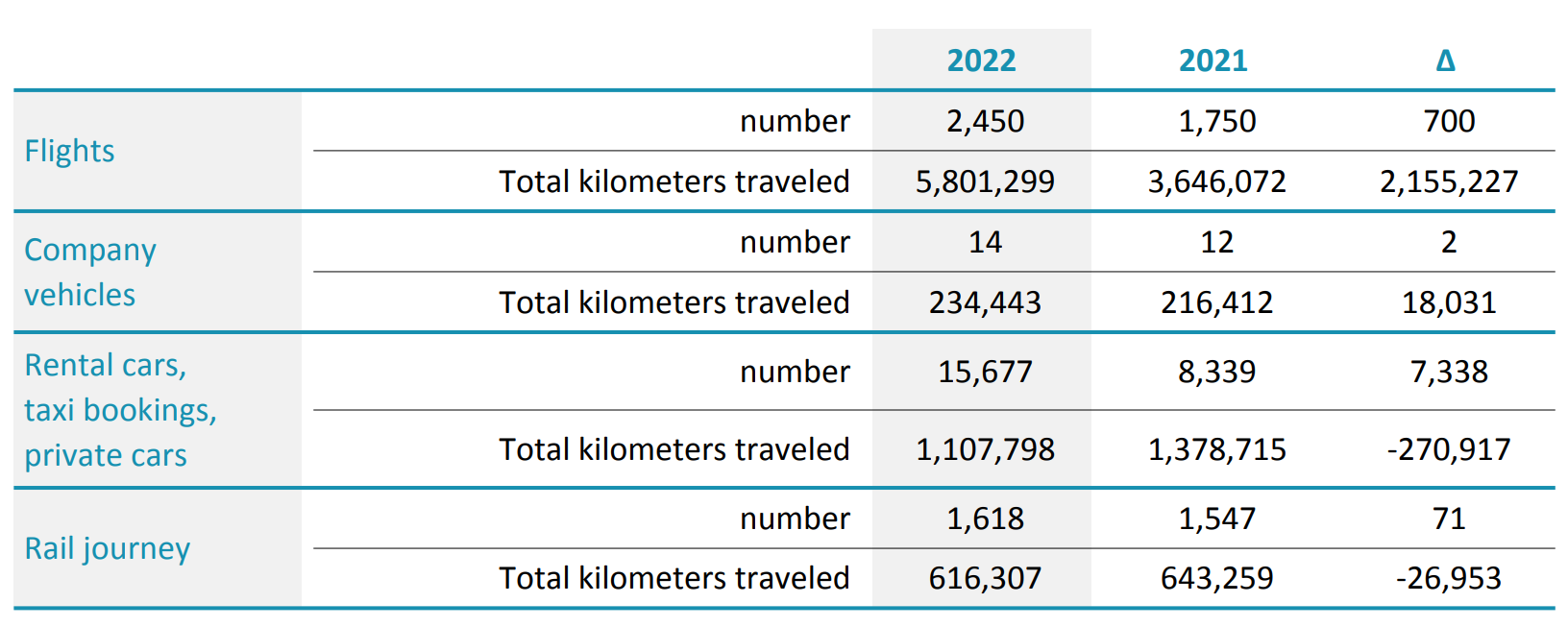- / HOME
We see the protection of the environment as a key factor in the sustainability of our business model and align our actions accordingly. In addition, we are in close contact with our customers and suppliers. Our innovative technologies and products, on which our success is based and whose efficiency and performance convince our customers worldwide, make a decisive contribution.
Our customers benefit from forward-looking solutions that save costs, conserve resources, and are energy-efficient in equal measure. Our customers include companies from the areas of electromobility (drive trains, charging infrastructure), renewable energies (network circuits), IT infrastructure (power supply), consumer electronics (3D sensors, fast chargers) as well as data transmission (fiber optic networks) and telecommunications (5G network).
We also make a significant contribution to digital progress in the areas of display technology (mini and Micro LEDs), lighting and UV radiation for disinfection/hygiene. Components for a variety of innovative applications, technologies and industries are manufactured on AIXTRON systems.
As a technology leader, we have been shaping the further development of power electronics and their manufacturing processes for more than 30 years.
Our technologies are at the heart of sustainable power electronics and thus support global efforts to combat climate change.
With the Action Plan on Sustainable Growth, the EU Commission aims to make the economic and financial system in the EU more sustainable. Climate neutrality should be achieved by 2050, i.e. the same amount of CO2 emissions should then be avoided or eliminated as is emitted. The core of this action plan is the EU taxonomy regulation, a standardized classification system for sustainable economic activities. It defines six environmental goals:

According to EU taxonomy guidelines, economic activities are “environmentally sustainable” if they
Technical assessment criteria are used to assess whether an economic activity makes a significant contribution to one of the goals and does not significantly impair the achievement of the other five goals. Criteria are currently only available for the first two EU environmental goals (climate protection/adaptation to climate change). Therefore, information only needs to be provided on these two targets for the 2022 financial year.
Against the background of the EU Taxonomy Regulation, we are reporting in the 2022 financial year on the taxonomy-eligible (eligible) and taxonomy-aligned (aligned) share of revenues, capital expenditure (CapEx) and operating expenses (OpEx) of our economic activities.
In the 2021 financial year, a project to implement the taxonomy requirements in relation to the EU environmental goals 1. Climate change mitigation and 2. Climate change adaptation was started. The project team, consisting of experts from different areas, first identified the economic sector “Manufacture of machines for other specific economic sectors a. n.g.” (NACE Code 28.99) as applicable to AIXTRON. Subsequently, our economic activities were assigned to the relevant taxonomy criteria and interviews and workshops were conducted with the respective contact persons and experts from the responsible departments.
The aim of the discussions was to check whether the economic activities can be assigned to taxonomy criteria (eligibility check) and whether they actually meet the corresponding technical taxonomy criteria (alignment check). The assessments of the experts were documented and corresponding evidence and evidence were examined.
The analysis has been updated for the 2022 financial year, in particular taking into account the interpretation of the taxonomy specifications. The analysis took into account aspects of materiality and cost/benefit considerations. AIXTRON has identified the following activities as taxonomy-eligible with regard to EU environmental goal 1:
The set of criteria “Production of other low-CO2 technologies” is of particular relevance for the supplier industry in mechanical and plant engineering. This set of criteria includes economic activities that produce technologies that aim to achieve significant savings in life-cycle greenhouse gas emissions and are proven to achieve them compared to the best performing alternative technology available on the market. Unlike criteria sets 3.1, 7.3, 7.3 and 7.7, criteria set 3.6 contains several terms that require interpretation, which are defined below.
For the identification of taxonomy-eligible economic activities within the meaning of Criteria Set 3.6, those technologies were identified from AIXTRON's technology portfolio that shows low CO2 emissions in their application. As a result, only those technologies that lead to significant savings in greenhouse gas emissions were classified as both taxonomy-eligible and taxonomy-aligned. Against this background, both our taxonomy-eligible and our taxonomy-aligned revenues correspond, as do CapEx and OpEx. The reduction in greenhouse gas emissions must be significant. However, a minimum value is not specified.
It can be assumed that the purpose pursued with the "EU Action Plan on Financing Sustainable Growth" is to focus on technological leaps rather than efficiency increases within the existing system: A saving of 20% should regularly be significant and thus a significant one contribute to climate protection. AIXTRON has set this value as the minimum value for significant savings in CO2 emissions. A reference technology is the technology that dominates the market and not a possibly very efficient niche technology with only a very small market share. With regard to the reference standard, we therefore only used this reference technology for the evaluation.
The analysis of the taxonomy conformity was carried out as follows:
As part of this analysis, the following taxonomy-eligible and at the same time taxonomy-aligned economic activities were identified at AIXTRON, which make a significant contribution to environmental goal 1. Climate change mitigation.
AIXTRON develops, produces and sells systems for the deposition of compound semiconductors. This separation is the essential step in the production of compound semiconductors, which contribute significantly to avoiding energy losses and thus to a significant saving of CO2.
WBG power transistors make a significant contribution to energy savings compared to established silicon-based technology through significantly reduced energy losses in the conversion of current and voltage (e.g. when charging and discharging batteries and electric vehicles or in power supply units and switches in the power grid). AIXTRON enables research into more energy-efficient power transistor designs and enables industry to mass produce the new devices.
Micro LEDs make a significant contribution to energy savings by reducing the energy consumption of displays by up to 90% compared to established LCD technology. Imaging is done selectively, i. H. Light is generated only in the pixels necessary to display the image. Black areas of the image remain dark and consume no energy, whereas conventional technology requires the shadowing of a permanently bright backlight. AIXTRON enables industry to mass produce new displays based on Micro LEDs.
The transition from wired to optical telecommunications, especially in the "last mile", contributes significantly to reducing the energy consumption of telecommunications networks while increasing data throughput at the same time. AIXTRON enables research into more energy-efficient and faster laser diode designs and enables the mass production of the new fiber optic modules by industry.
AIXTRON is researching the technology for depositing complex nanostructures. These nano-materials are used, for example, in neural computers or in quantum sensors, which are able, among other things, to enable machine vision, speech recognition and data classification with 500 to 1000 times lower energy consumption.
AIXTRON develops, produces and sells systems on which compound semiconductors
are made that generate electricity from solar energy.
Compound semiconductors for concentrator photovoltaic (CPV) solar cells are much more efficient at generating electricity from solar energy than conventional crystalline silicon-based solar cells. Solar cells made from compound semiconductors are often used for high-tech applications such as B. used in space travel.
With regard to the EU environmental target 2. Climate change adaptation, there are no indications that AIXTRON activities increase the adverse effects of the current and expected future climate on AIXTRON itself or on people, nature, or assets. The AIXTRON production sites are not subject to any significant physical climate risks.
The criteria for the EU environmental target 3. Sustainable use and protection of water and marine resources essentially relates to legal and official requirements that AIXTRON is obliged to comply with. Water is not used to any significant extent in the production process at AIXTRON. The systems are to be kept away from water.
With regard to environmental goal 4. Transition to a circular economy, there are general requirements such as long usability, easy maintenance or dismantling. Most of the components are designed for very long service life, can be recycled and still have a monetary value at the end of their useful life (e.g. steel, stainless steel, aluminium, copper, electronics).
With regard to the EU environmental goal 5. Pollution prevention and control, there are no indications that AIXTRON is violating the corresponding specifications. AIXTRON does not manufacture, place on the market or use substances of very high concern in terms of the taxonomy specifications.
With regard to the EU environmental goal 6. Protection and restoration of biodiversity and ecosystems, environmental impact assessments and assessments are carried out where there is a corresponding requirement.
Information on compliance with the minimum requirements with regard to occupational safety and human rights can be found in the "Occupational health and safety" chapter and in the "Conflict minerals" chapter in this report and on the AIXTRON website in the sustainability section.
To determine the key figures (KPIs) to be reported, the taxonomy-eligible and taxonomy-aligned net revenues, investments (CapEx) and operating expenses (OpEx) are set in relation to the total net revenues, the total investments or the total operating expenses to be taken into account according to the taxonomy specifications. The definition of the respective KPI is based on Annex I of the Delegated Act to Article 8 on the content and presentation of the information to be disclosed.
Double counting is avoided by clearly assigning the taxonomy-eligible or taxonomy-aligned revenues, CapEx and OpEx to a taxonomy-eligible or taxonomy-aligned economic activity.
Revenue within the meaning of the EU Taxonomy Regulation is defined as net revenue in accordance with International Financial Reporting Standards (IFRS) as reported in the consolidated income statement and relates only to fully consolidated subsidiaries. Further information on revenues can be found in the section “development of revenues” on page 80 of the annual report. The majority of the taxonomy-aligned AIXTRON revenues are attributable to the sale of the systems presented on page 5 and can be assigned to taxonomy criteria set 3.6.
The calculation of CapEx within the meaning of the EU Taxonomy Regulation is carried out on a gross basis, i.e. without taking into account revaluations or scheduled or unscheduled depreciation. CapEx includes investments in long-term intangible or tangible assets as reflected in the consolidated balance sheet. Further information on CapEx can be found in the investments section on page 94 of the annual report.
The numerator corresponds to that part of the CapEx contained in the denominator that relates to assets or processes associated with taxonomy-aligned economic activities. Other CapEx within the meaning of Article 1.1.2.2. b) or c) of the delegated act on Article 8 of the EU Taxonomy Regulation (C(2021) 4987 final) of July 6, 2021, does not apply.
OpEx within the meaning of the EU Taxonomy Regulation takes into account non-capitalizable expenses that are recognized in the consolidated income statement. In the 2022 reporting year, in addition to the expenses for research and development, the expenses for building renovation measures, short-term leasing, maintenance, and repairs were also included, which were considered immaterial in the previous year's report. The values for the 2021 financial year have been adjusted accordingly.

For us, new technologies are the result of targeted investments in our research and development. The R&D process starts with basic research on materials and then moves on to processes and procedures. A key result of our research work is our innovative product portfolio with technology solutions that enable our customers to manufacture products that save greenhouse gas emissions during their use.
We work together with renowned universities, research centers, and industrial partners around the world in order to implement demanding projects on a national and international level in partnership. We benefit from the fact that we can work together with qualified partners, but at the same time, we are also in demand as a partner for research projects.
When developing innovations for materials and processes, we work together with our partners in nationally or Europe-wide funded joint projects. In close cooperation, solutions are created that should lead to marketable products.
In the "Research and Development" section of the AIXTRON Annual Report 2022, you will find some examples of research projects in which AIXTRON is involved.

In the previous year, a climate balance including an overview of the total CO2 emissions (Scope 1, Scope 2, and Scope 3) was drawn up for the first time. For the current report, the analytical instruments used in the previous year were further optimized and the values determined for 2021 were once more checked and adjusted.
The newly determined value for 2021 is 50,258 CO2e*. For the year 2022, AIXTRON will have emissions of 53,298 CO2e. The value for 2022 as a whole is therefore slightly higher than the values determined for 2021. Reasons for this increase include the good order situation and production capacity utilization as well as more business trips again after various COVID travel restrictions were lifted in many places.

We have been offsetting the unavoidable CO2 emissions of our business activities (Scope 2 and parts of Scope 3 emissions) since 2019 by supporting two climate protection projects certified to the highest standard. We chose the projects because of the positive impact on the environment, climate and residents. The emission savings are regularly checked and confirmed by independent experts. The funding period for the two projects currently extends to 2023. Further details on the projects that AIXTRON supports are published on the company website (https://www.aixtron.com/).
The project for sustainable forestry in the Peruvian region "Madre de Dios" implements measures and initiatives for the sustainable use of the Amazon forest together with the residents and opens up alternative sources of income for the local population.
In Uganda, we support the spread of energy-efficient cooking stoves in private households. The improved stoves help the families to save up to 50% fuel and thus reduce the pollution of the air in kitchens and living rooms.
As a basis for our efforts to further reduce our energy requirements, we implemented an energy management system according to the ISO 50001:2011 standard at the German locations of AIXTRON SE many years ago. The successful conversion to the requirements of ISO 50001:2018 was confirmed by the re-certification audit in 2020, which is valid until 2023.
At our German locations, we work continuously to improve our energy management systems. To do this, we use extensive evaluations with which systems and processes can be controlled and optimized in a targeted manner. In order to improve the evaluation, we continued the concept of the cloud-based dashboard for the 2022 reporting year by implementing new meters in order to optimize the control technology of the energy center. The system, consisting of more than 160 electrical meters, has been further optimized. The data from these meters is recorded and evaluated centrally every 15 minutes. In addition to data acquisition, the system offers an extensive determination, evaluation, and documentation tool. In this way, targeted measures to reduce CO2 emissions can be initiated and the corresponding progress can be monitored immediately.
Since 2019, we have been sourcing electricity exclusively from renewable energies at our European locations and also in the USA. Due to the small quantities, the purchase of electricity from renewable energy sources in Asian countries has not been economically feasible up to now. We intend to source electricity from renewable energy sources in these regions as well from 2023. In addition, we installed a photovoltaic system at our Kaiserstrasse location many years ago. 3,293 kWh of electricity generated in 2022 will be 100% fed into the grid.
Derived from our systematic energy management, we have already initiated and implemented many projects and measures with the aim of sustainably reducing energy consumption. The most important projects of the past year are listed here as examples:
In the past fiscal year, we were able to increase our revenues significantly, which was accompanied by a higher demand for electricity. However, thanks to the various energy-saving projects, we were able to mitigate the increase in overall consumption. Energy requirements rose by 5.2% in the past financial year, with energy consumption per EUR million in revenues falling by -2.6%.
Our successes are confirmation and incentive at the same time: Every year we review our status quo and set ourselves new, ambitious energy-saving targets. At the same time, this is also an economic consideration for us, because the lower consumption also reduces our costs.
We are constantly developing measures to increase energy efficiency. Our goals primarily relate to our research and production sites in Germany and Great Britain.
The electricity requirement in 2022 was 12,677,293 kWh higher than in 2021 (10,883,534 kWh). The reason for this was the continued strong growth in business volume and the continuing good order situation.
The demand for natural gas (426,321 kWh) and district heating (1,973,982 kWh) has fallen significantly to a total of 2,400,303 kWh compared to 2021 (3,452,892 kWh). This is proof of the effectiveness of our ambitious energy management and our strategy of using waste heat and state-of-the-art heat pumps. In this context, however, it should also be noted that consumption in 2021 was significantly higher than in 2020. This was mainly due to certain COVID protective measures.

In the manufacture of our systems, AIXTRON uses numerous materials whose procurement, transport, use and disposal have an impact on people and the environment. AIXTRON has made it its goal to reduce this influence to a minimum. Avoiding waste has the highest priority, i.e. keeping material consumption and disposal quantities as low as possible. In the area of our waste management, separate and safe disposal is therefore very important to us, depending on the type of waste and recycling process. We record and classify locally the quantities that are recycled or disposed of, distinguishing between hazardous and non-hazardous waste. Residual materials are reused whenever possible. Waste is recycled materially or thermally or — if this is not feasible - disposed of properly.
Hazardous substances and materials are used in the process chambers of our systems and sometimes also in the pipelines, which must be disposed of separately. During disposal, the individual components and assemblies are collected in specially secured containers so that the hazardous substances cannot escape. At our European locations, we work together with local specialist companies who professionally dispose of hazardous waste at regular intervals. Wherever possible, e.g. B. in the pipes of the exhaust system, the sometimes high-quality materials (e.g. stainless steel) are processed again and then reused in the sense of a circular economy. When it comes to exhaust gas cleaning, we use catalytic cleaning processes wherever possible, which largely prevent the accumulation of hazardous waste. Our exhaust gas cleaning system completely dispenses with wet-chemical processes, so that no contaminated wastewater is produced throughout the entire operation.
The increased amount of non-hazardous waste in Herzogenrath (D) and Cambridge (UK) is due to the increase in production volume.

Due to the complexity of our systems, it is necessary to provide customers with targeted advice on-site. Systems are developed and optimized jointly in some cases. We also support our customers in training employees. As a rule, this requires corresponding travel activity by our employees. Most of our customers are based outside of Germany, which affects the kilometers traveled and the choice of transport.
In the 2022 reporting year, we conducted a survey among all employees on their commuting behavior for the first time. It turned out that 39% of employees come to work sustainably: 15% walk or use a bicycle/e-bike, 12% use public transport and 12% rely on vehicles with alternative drives - be it hybrid - ( 10%) or purely battery electric vehicles (2%). At 61%, however, the majority still uses vehicles with classic combustion engines.
We have a total of 15 e-car charging stations and 24 e-bike charging stations on our company premises in Herzogenrath.

Traveling by plane cannot always be avoided as we sell our systems and technologies worldwide. However, we are trying to limit our air travel to what is necessary. For intercontinental travel, however, they are the only viable option in day-to-day business. In the reporting year 2022, there were 2,450 bookings (2021: 1,750).
A total of 5,801,299 kilometers were flown (2021: 3,646,072 km), an increase of 59% compared to 2021. 1,474 t CO2e (2021: 1,213 t CO2e) were emitted.
The reason for this increase compared to 2021 is the relaxed travel restrictions in connection with the corona pandemic.
In 2022, our company fleet consisted of 14 cars (2021: 12), two diesel-powered vehicle, four four gasoline-powered vehicles, seven hybrid-powered vehicles, and one purely electric vehicle. Since 2020, in accordance with our internal guidelines, we have limited ourselves to hybrid and electric cars when purchasing new company vehicles (with the exception of Korea due to a lack of availability in the selected vehicle class): Compared to 2021, one gasoline-powered vehicle has been added. The number of hybrid-powered vehicles increased by two to seven in 2022.

In the 2022 reporting year, our employees traveled a total of 1,107,798 km with a rental car, taxi, or private car (previous year: 1,378,715 km).
We encourage our employees to travel by train whenever possible on business trips. While employees traveled 643,259 km by train in 2021, it was slightly less in the 2022 reporting year at 616,307 km.

Alan Tai
Taiwan/Singapore
Christof Sommerhalter
USA
Christian Geng
Europe
Hisatoshi Hagiwara
Japan
Nam Kyu Lee
South Korea
Wei (William) Song
China
AIXTRON SE (Headquarters)
AIXTRON 24/7 Technical Support Line
AIXTRON Europe
AIXTRON Ltd (UK)
AIXTRON K.K. (Japan)
AIXTRON Korea Co., Ltd.
AIXTRON Taiwan Co., Ltd. (Main Office)
AIXTRON Inc. (USA)
Christoph Pütz
Senior Manager ESG & Sustainability
Christian Ludwig
Vice President Investor Relations & Corporate Communications
Ralf Penner
Senior IR Manager
Christian Ludwig
Vice President Investor Relations & Corporate Communications
Prof. Dr. Michael Heuken
Vice President Advanced Technologies